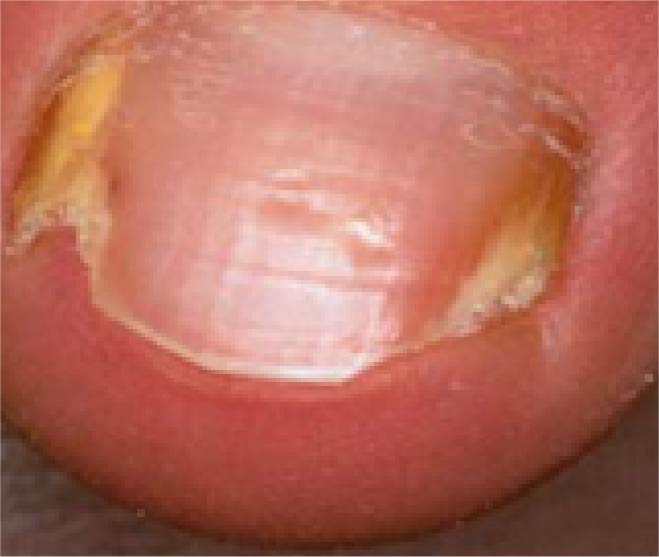
Lateral fungal nail involvement
in onychomycosis
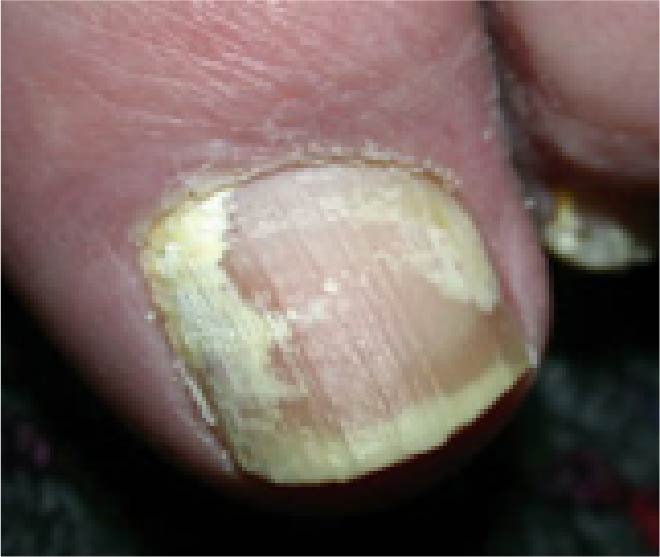
Superficial white onychomycosis
What Are Fungal Nail Infections?
Nail fungus is a common condition that begins as a white or yellow spot under the tip of
your fingernail or toenail. As the fungal infection goes deeper, nail fungus may cause your nail to
discolour, thicken and crumble at the edge. It can affect several nails.
FAQs
- What are the symptoms of fungal nail?
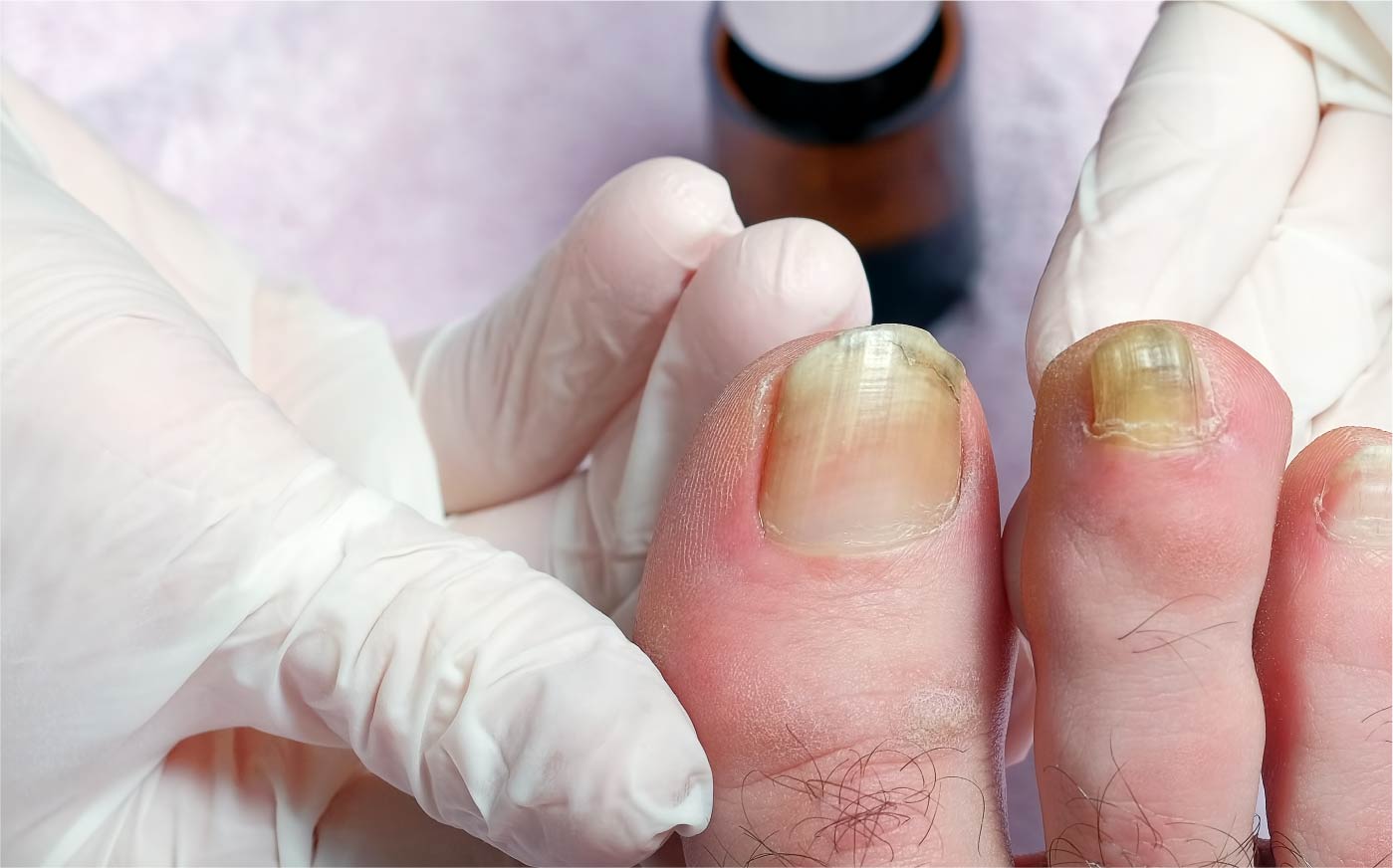 You may have nail fungus if one or more of your nails are:
You may have nail fungus if one or more of your nails are:- Thickened
- Whitish to yellow-brown discoloration
- Brittle, crumbly or ragged
- Distorted in shape
- A dark color, caused by debris building up under your nail
- Smelling slightly foul
- What are the causes of fungal nail?
Fungal nail infections are caused by various fungal organisms (fungi). The most common cause is a type of fungus called dermatophyte. Yeast and molds also can cause nail infections.
It can develop in people at any age, but it's more common in older adults. As the nail ages, it can become brittle and dry. The resulting cracks in the nails allow fungi to enter. Other factors — such as reduced blood circulation to the feet and a weakened immune system — also may play a role.
Toenail fungal infection can also start from athlete's foot (foot fungus), and it can spread from one nail to another. But it is uncommon to get an infection from someone else.Reference from MayoClinic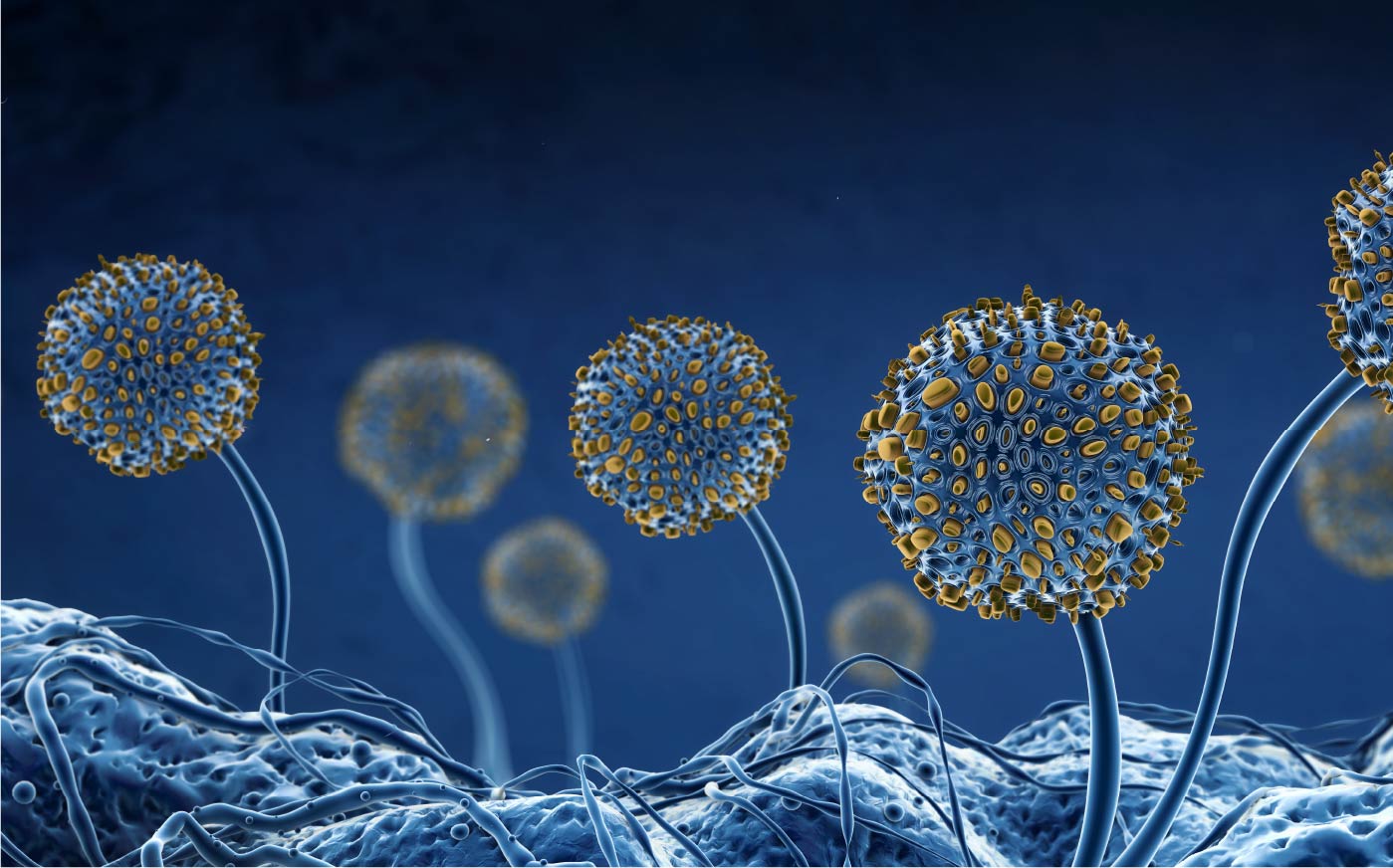
Treatments for Fungal Nails
A typical Fungal Nail Consultation would involve the Podiatrist assessing and diagnosing the
infected nails. In
some cases, clippings or scrapings are taken and sent off site to be tested. The Podiatrist would then prep the
nails, by cutting them back and grinding them down to remove some of the thickness.
We would then run through the best treatment options for you, whether that be topical, oral or laser therapy, you’ll also be coached on how best to self-manage your issue so that it does not reoccur.
Fungal nail infections can be difficult to treat. Treatment depends on the severity of your condition and the type of fungus causing it.
We would then run through the best treatment options for you, whether that be topical, oral or laser therapy, you’ll also be coached on how best to self-manage your issue so that it does not reoccur.
Fungal nail infections can be difficult to treat. Treatment depends on the severity of your condition and the type of fungus causing it.
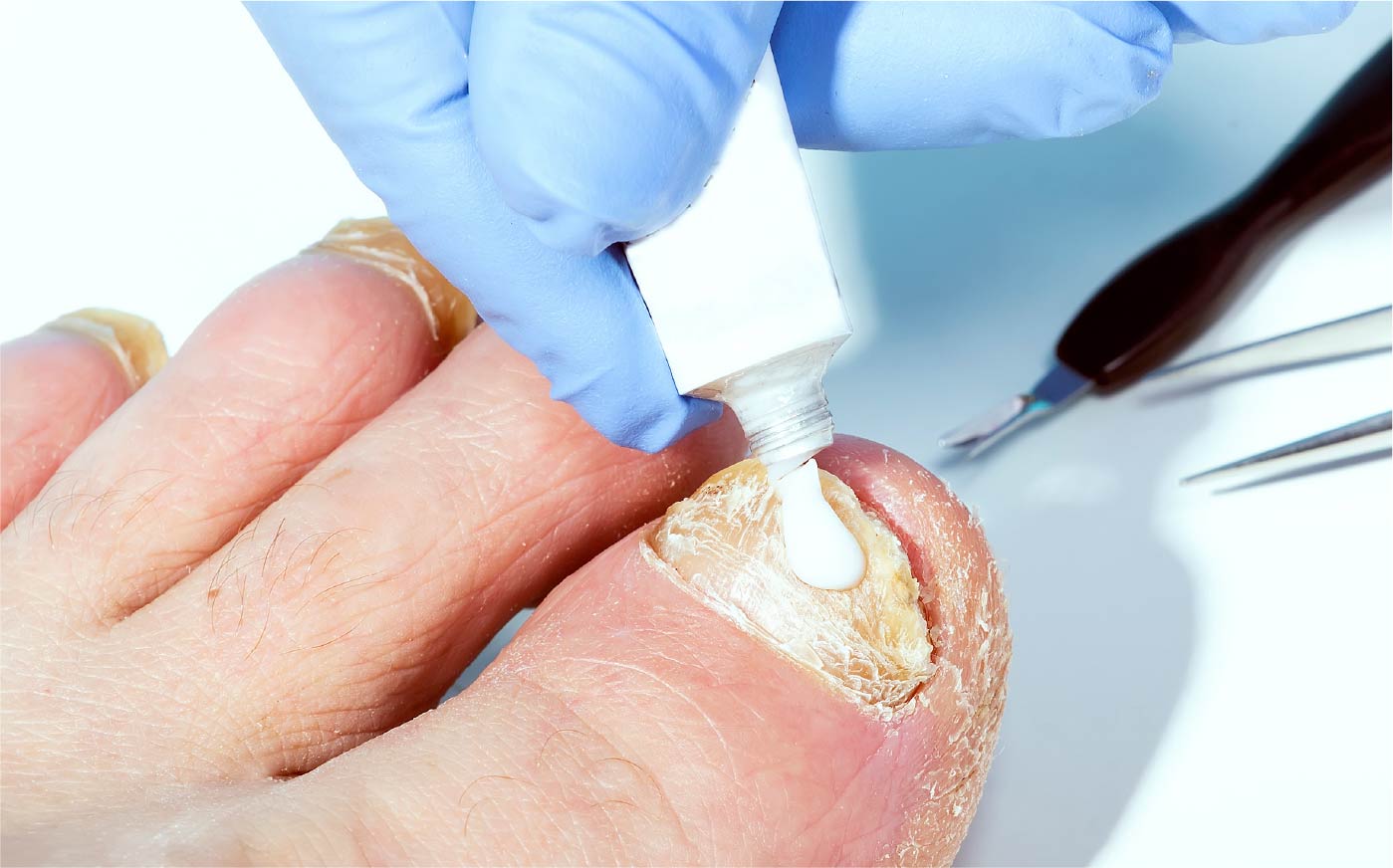
Topical Anti-fungal Solutions
Topical treatment is usually the first line therapy for fungal nails. The condition of the nail can
reflect
the effectiveness of the treatment, so it is recommended you visit a Podiatrist before starting
treatment.
It is advised for all topical treatments, to gain the best results, that the nail is thinned as much as
possible and, nail that may have lifted or become brittle, is cut away and exposes the nail bed. Without
this, it may delay or lower the effectiveness of treatment. This allows the solution to penetrate the
nail
bed more effectively.
Oral Medication
Oral anti-fungal medication is still considered the gold standard in nail fungus treatment and it is
reported to have a 70% success rate. A course on oral anti-fungal medication can last up to 12 weeks.
The reason why its success is greater is because the medication is circulated in your blood stream and
this treats the nail fungus 24 hrs around the clock.
The main draw back with oral anti-fungal medication is that it is very strong medication and can often have nasty side effects, including liver damage. For this reason oral anti-fungal drugs are usually only prescribed following confirmation of diagnosis through pathology and treatment should be carefully monitored. Oral anti-fungal medication is best used for severe or chronic nail fungus infections or those which haven’t responded to conservative treatment.
The main draw back with oral anti-fungal medication is that it is very strong medication and can often have nasty side effects, including liver damage. For this reason oral anti-fungal drugs are usually only prescribed following confirmation of diagnosis through pathology and treatment should be carefully monitored. Oral anti-fungal medication is best used for severe or chronic nail fungus infections or those which haven’t responded to conservative treatment.
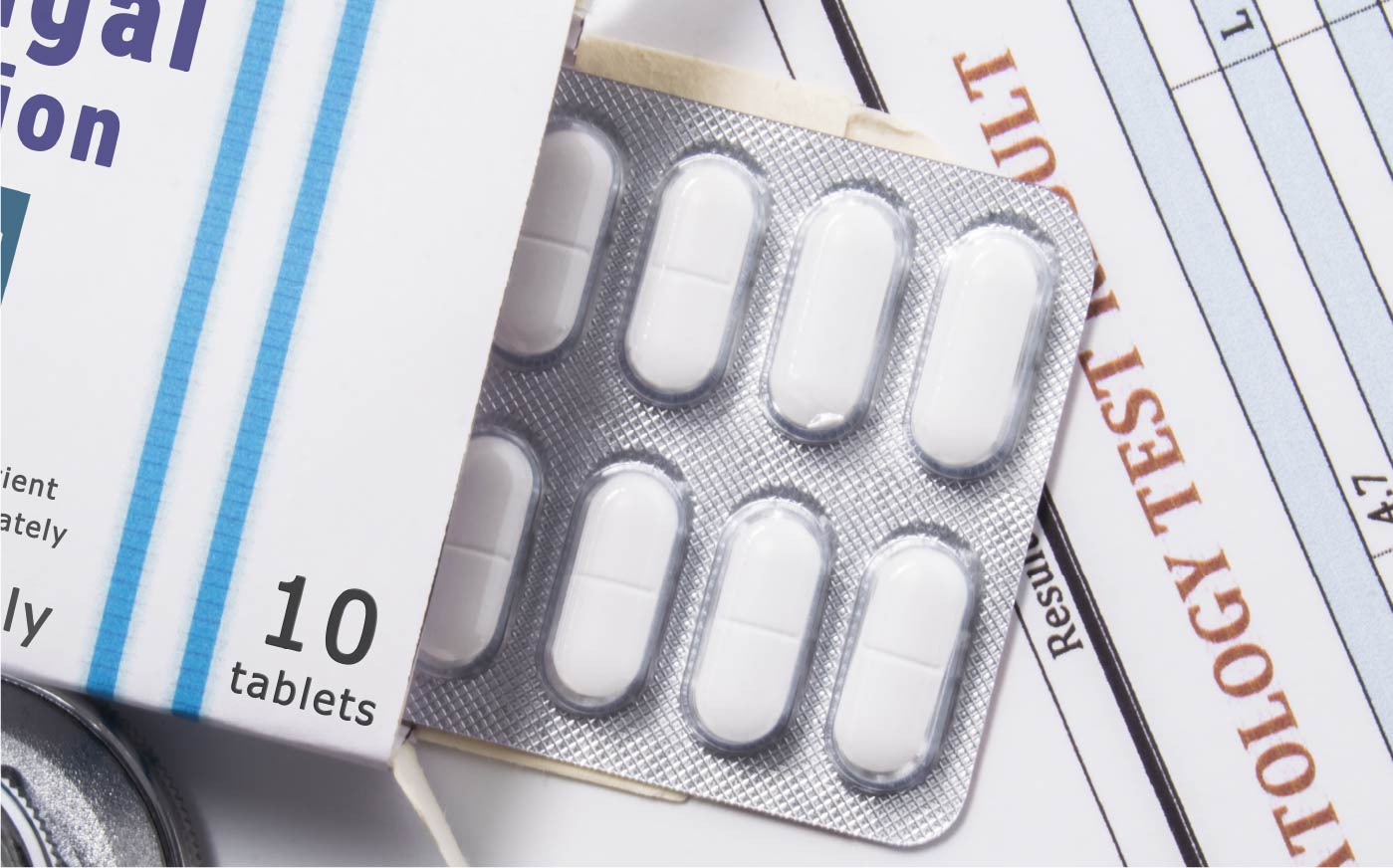

Nail Surgery / Nail Avulsion
In cases where a nail infection has progressed to the “severe” stage and is extremely painful, your
doctor may recommend removing your nail. A new nail will usually grow in its place, but it will come in
slowly and may take as long as a year to grow back completely. Sometimes surgery is used in combination
with a topical solution that treats the nail bed to further inhibit the fungus.
Lunula Laser for Fungal Nails
What is Lunula Laser?
The Erchonia Lunula laser device is a Low-Level Laser Light that is specifically designed for treating
onychomycosis – toenail fungus. Lunula Laser poses none of the risks and harmful side effects of oral
anti-fungal medications and is painless, unlike other laser therapies.


100% Pain Free
- The first and only non-thermal (Cold Laser) FDA Market Cleared laser device for the temporary increase of clear nail for patients with Onychomycosis
- The patient will feel NO heat or pain from the laser
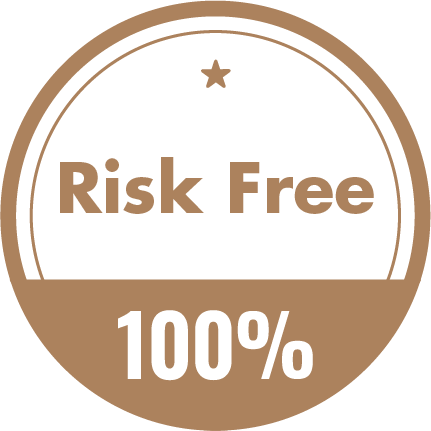
Risk Free
- Made in USA
- No heat used and therefore there are ZERO risks involved with it is usage
- The machine is computer automated to ensure consistency of coverage of the nail (Comparatively, hot lasers are generally handheld and run the risk of inconsistent application)

Effective outcomes supported by research, clinical trials and anecdotal evidence
- Receive FDA-clearance based on a double-blind, randomized, multi-site and placebo-controlled clinical trial
- Clinical trial proved 89% of the Lunula Laser patients respond to treatment
- Have a higher success rate and better patient outcomes than other conventional treatments, such as hot laser therapy which other clinics use
- No recovery period after - you can wear socks and shoes immediately after treatment

No significant side effects
- No chance for liver toxicity
- Do not interfere or interact with any systemic medicine
FAQs
- How does the Lunula Laser work?
This FDA-approved toenail fungus treatment is revolutionary. With low-level laser energy, the Lunula Laser uses photochemistry to target the toenail fungus and stimulate blood flow. Photochemistry is the science of light and colour.
With red and violet laser lights, the photochemical reaction caused by the laser kills the fungus and stimulates new, clear toenail growth. While the laser aggressively treats the fungus, it does not affect the rest of the toe or foot.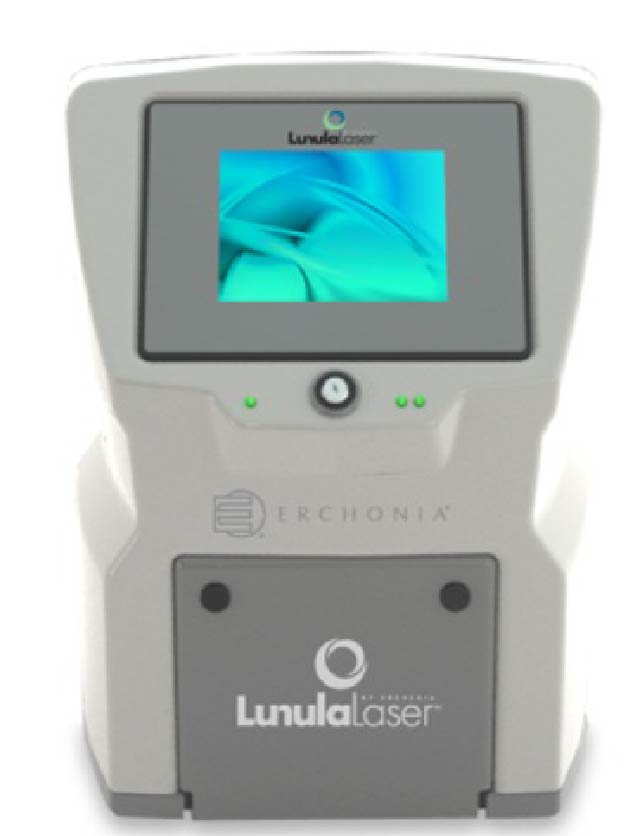
-
What Patients Should expect During Laser Treatment?
There have been no reported adverse reactions to the laser treatment. It is well-tolerated, quick, safe, and painless
- Sit comfortably on the examination chair
- Place the foot in the Lunula Laser
- The laser targets the treatment area on the foot for 12 minutes
- After the treatment there is no downtime nor additional medicine
The procedure is quick and painless, and each foot takes about 12 minutes to treat. Most patients have multiple sessions to see optimal results, and sessions are usually spaced out about seven days apart. - What are the possible side effects?
No significant side effects have been reported.

- How effective is the treatment?
Clinical studies show the Lunula laser course of treatment has the highest success rates of all the treatments available with around an 85% success rate.Before / After:
Photo Code#:
BaselinePhoto Code#:
6 Monthsmm Clear Nail:
Baselinemm Clear Nail:
6 MonthsBaseline to
6 months change#032 
#049 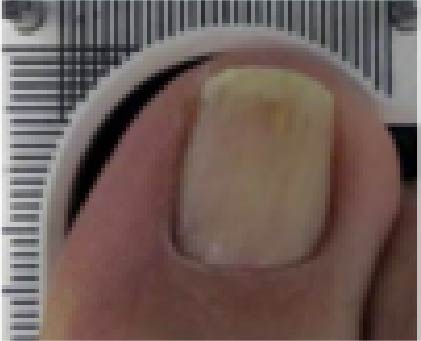
10.41 16.24 5.38 #006 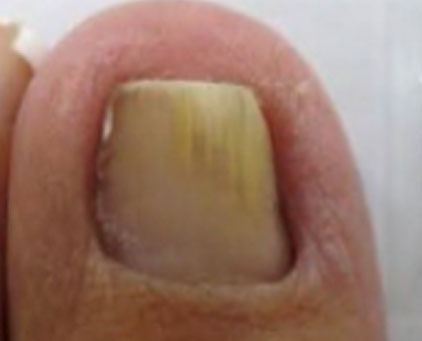
#015 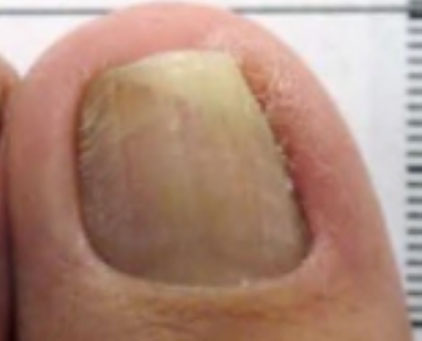
6.66 12.02 5.36 #140 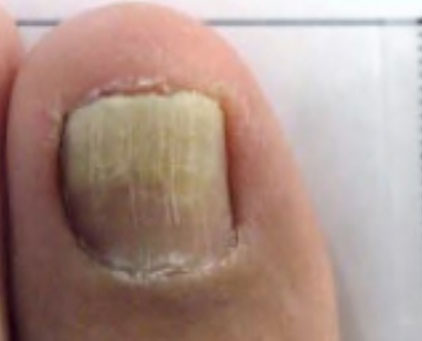
#162 
7.71 11.22 3.51 #189 
#195 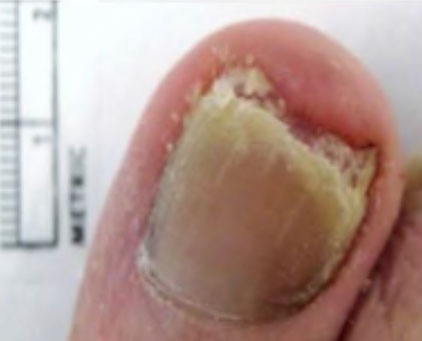
8.61 16.32 7.71 #001 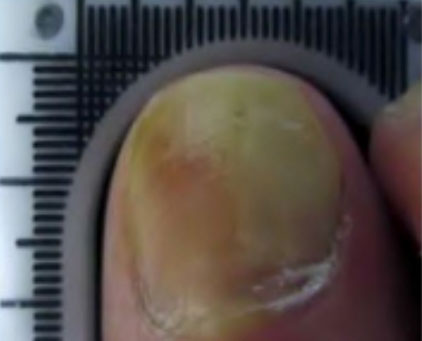
#086 
2.49 9.79 7.3 - Does it hurt?
Treatment with Lunula ‘Cold laser’ is completely pain-free.
Latest Research on Fungal Laser Treatment
Patient Reviews
For More Details
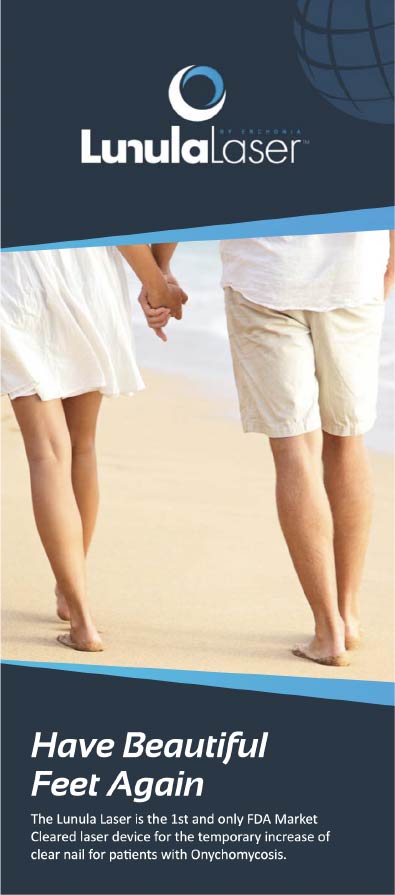
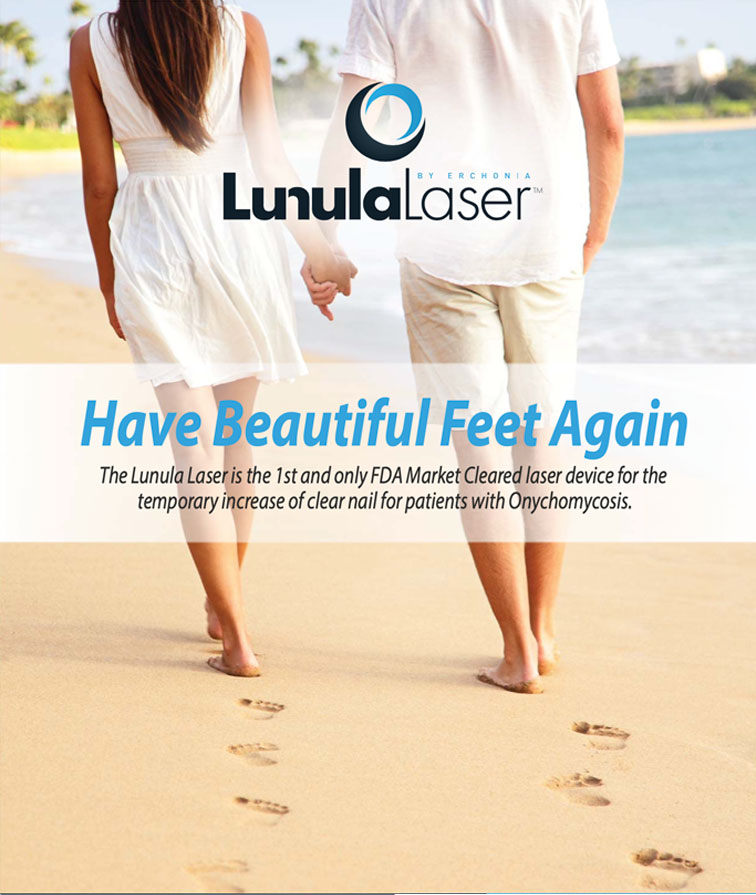
Lunula Laser Videos
Lunula Laser Science
Effective Treatment
Lunula laser Introduction
Lunula Laser on ITV1
